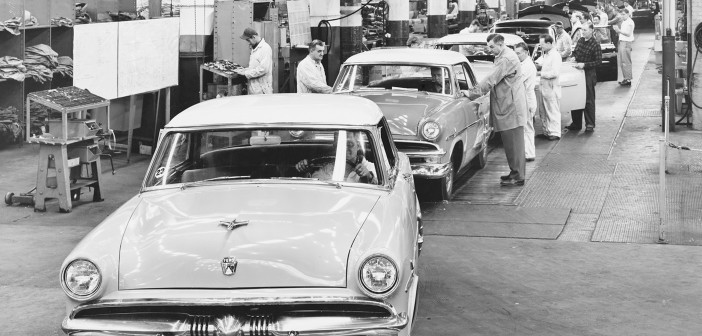Michiganders remember when anyone could get a high paying factory job straight-out of high school and then retire in 30 years with a pension. Those days are gone. Why?
Manufacturing employment has substantially decreased across the country. In 1990, 18 million people worked in manufacturing while 12 million did in 2017, a 33 percent decrease. However, during this same time period, manufacturing output increased by 60 percent. Thus, more output is being produced with fewer workers, meaning that automation is the reason that manufacturing is not the source of employment that it used to be.
It is important to note that the share of manufacturing employment to total employment has been steadily declining since the end of World War II. In 1930, 30 percent of workers were in manufacturing. This declined to 26 percent by 1969, to 22 percent by 1979, 16 percent by 1989, to 13 percent by 1999 – so that in 2017, only eight percent of workers were in manufacturing. This trend did not speed up in 1994, when the U.S. ratified NAFTA or in 2001, when China’s “most favored nation” trading status was made permanent. Again automation, not international trade, explains the decline in manufacturing employment experienced in the post-WWII economy.
In Michigan, we get a misleading picture of why manufacturing employment declined due to what happened with the “Big 3” auto companies and the lost jobs and vacant factories that resulted. In 1990, there were approximately one million autoworkers nationwide, compared to 950,000 in 2017, a five percent decrease. In contrast, autoworker employment in Michigan decreased from 192,000 jobs to 132,000 jobs during this same time period, which is a 31 percent decrease.
The reason for this disproportionate decrease in auto employment in Michigan is the loss of the Big 3’s market share. In 1990, General Motors, Ford and Chrysler collectively sold 71 percent of all automobiles in the United States, with GM by itself controlling 35 percent of the U.S. market. By 2017, the Big 3 collectively sold 44 percent of all automobiles in the U.S., with GM’s market share falling to 17 percent.
Each point of market share represents approximately 170,000 auto sales per year. Thus, the Big 3’s collective loss of 27 points of market share between 1990 and 2017 represents 4.6 million lost auto sales per year. There are many reasons that explain the Big 3’s decline, but the biggest ones are likely the quality issues the companies had difficulty addressing. Had this loss of market share not occurred, Michigan’s auto employment would have likely matched the national trend during this time period, meaning there would be 50,000 more auto jobs in Michigan than there currently are.
The U.S. manufacturing base is not in decline – manufacturing output is higher than ever and high-skilled job opportunities do remain. Employers frequently report a shortage of such workers and these jobs will be difficult to automate away.














